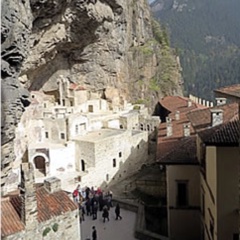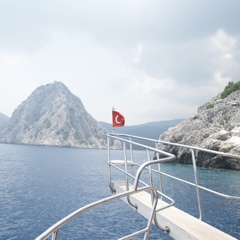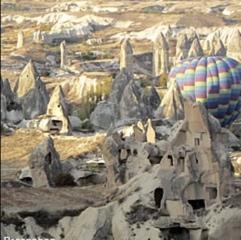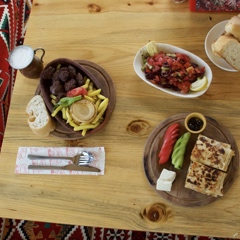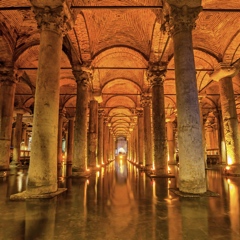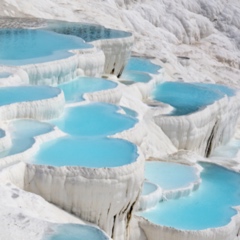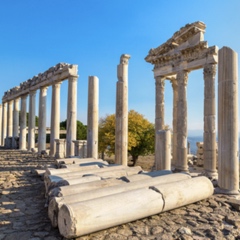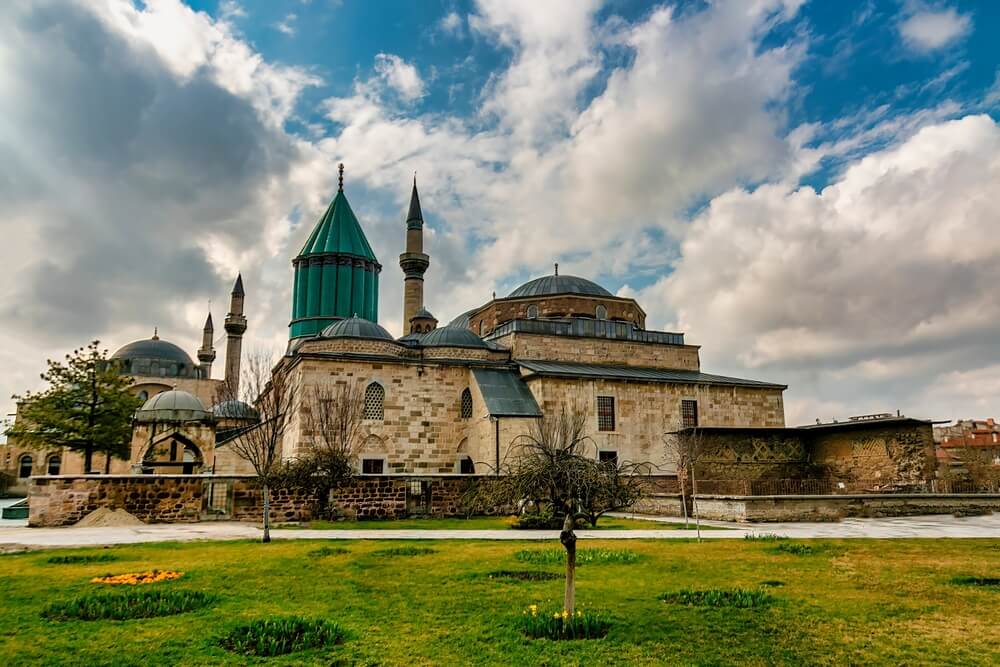
The Mevlevi Order is an oral and intangible heritage of the Islamic theologian Rumi, who was a 13th-century celebrated poet, Sufi mystic, and Islamic theologian. Rumi followed the teachings of Sufi Islam and the Prophet Muhammad, which shaped his beliefs and life, ultimately leading to the Mevlevi Order.
The Mevlevi Order and belief emphasize the importance of divine love, forgiving, and leaving one's personal desires behind to be spiritually reborn as a human being and receive God's beneficence. After the death of Rumî in 1273, the Mevlevi order spread throughout the Seljuk Empire and the Ottoman Empire.
Who is Mevlana?
The Mevlevi Order, also known as Mawlawiyya (followers of Mevlâna Jelaleddin Rumî), is a Sufi order that was formed in the Turkish city of Konya (the former capital of the Seljuk Empire before being conquered by the Ottoman Empire) by Sultan Veled (son of Rumi) after the death of Rumi, also known as Mevlevi or Mevlana.
Mevlana was born in 1207 in the city of Balkh, Afghanistan. Due to the Mongol invasions in Central Asia, Mevlana and his family migrated to the capital of the Seljuk Turks, Konya, where he lived until his death on December 17, 1273. He used Persian, Turkish, Greek, and Arabic to create his works. His most famous works include Mathnawi and Divan-i Kabir, also known as Divan-i Shams and Divan-i Shams-i Tabrizi, a set of Islamic and mystical poems that express divine love, self-acceptance, forgiveness, and longing, teaching Sufis to be truly in love with God.
The Mevlevi has always been ecumenical in outlook, welcoming non-Muslims to the sema in the belief that all people are equal in the sight of God. (Seljuk society was an equally ecumenical place: a ruling class of Turks and a populace of Byzantine Greeks, Jews, Armenians, Kurds, and others.
Rumî‘s most famous writing is his invitation to the sema:
Whoever you may be, come. Even though you may be an infidel, a pagan, or a fire worshipper, come. Our brotherhood is not one of despair. Though you have broken your vows of repentance a hundred times, come.

Mevlevi Sema Ceremony
The Mevlevi Order's most noticeable ceremony is the Sama, or Sema ritual (Sema ceremonies, also known as the Whirling Dervish Ceremony), which is a religious ceremony held by the Whirling Dervishes of the Mevlevi Order in the dervish lodge. Even more than 800 years later, Whirling Dervishes are alive and well in Turkey, performing their worship ceremony. (Want to see them?)
The Sema can be thought of as a customary meditation practice and is derived from Rumî‘s habit of occasionally whirling in ecstatic joy in the streets of Konya Seljuk, the Turkish Sultanate of Rum, and his home for the greater part of his life. It is perhaps the most familiar aspect of Sufism (Islamic mysticism). Whirling dervishes perform the Sema rituals even today to honor their connection with God and Rumi's death in their annual celebration. Also known as the nuptial night, the Mevlevi Order believes Mevlana married God when he died.
Their spellbinding worship service, the Mevlevi sema, has dervishes in long white dresses whirling ecstatically for a quarter-hour at a time to the drone of ancient Islamic hymns and reed flute. The Whirling Dervishes whirl in a circle around their shaikh in a dervish lodge, following a precisely prescribed pattern. They use their right foot to propel themselves in a counter-clockwise circle, while their left foot remains rooted to the floor, acting as an axis around which they turn. Both arms are extended and raised to the level of the head. The right palm faces upward to receive divine grace, while the left palm faces downward to channel that grace to the world. The Whirling Dervishes inwardly chant "Allah" with each 360° turn.
The Whirling Dervishes begin their performance by wearing black cloaks called hırka, symbolizing death and the grave. They then remove the cloak before starting to whirl. They wear a tall, brown hat known as a sikke on their heads, which represents the tombstone and the death of the ego. After Whirling Dervishes take off their cloaks, the long white robes (tennûre), white skirt, and white jacket become visible. Both of these represent the resurrection.
Though all dervish orders were closed and the Whirling Dervish ceremony was banned shortly after the foundation of the Turkish Republic by the Turkish government, the Mevlevi were soon allowed to reform as a “cultural organization" in their dervish lodge, perhaps because they were not overtly political and reactionary, as were some other orders. Over the past decade, the ritual has gained even more popularity. We encourage you to attend a Mevlevi sema if possible. The prime event is the annual Mevlana Commemoration Festival (Mevlâna Anma Törenleri, Şeb-i Aruz), held at the Mevlana Cultural Center in the first half of December. Because hotel rooms are fully booked months in advance, the best way to attend is on a Rumi Tour.
However, you may also be able to witness whirling and perhaps even a proper sema, Konya, near (but not in) the Mevlana Cultural Center: a modern shopping-and-restaurant complex near the museum that sometimes arranges whirling. You may also be able to observe the sema in Istanbul.
Visit Konya
Konya is the most religiously conservative city in Turkey; however, the city is also home to some of the most innovative structures, as well as the best-preserved Seljuk structures in Turkey and even Asia Minor.
The city's beautiful gardens and ancient atmosphere take you on a journey through time, with a mix of European, Asian, and Western influences that showcase the best of the city. If you ever find yourself in Konya, don't forget to admire the history and beauty of the city. Happy travels.
—by Tom Brosnahan, updated by Can Turan



